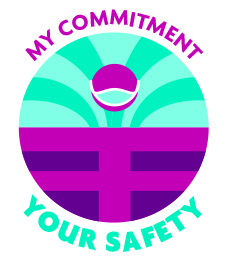INFORMATIVE READS
![]()
The Divided Mind, John E. Sarno, M.D.
The Mindbody Prescription, John E. Sarno, M.D.
Healing Back Pain: The Mind-Body Connection, John E. Sarno, M.D.
The Thinking Body, Mabel Ellsworth Todd (1937)
The Mastery of Love, Don Miguel Ruiz
The Four Agreements, Don Miguel Ruiz
The Fifth Agreement, Don Miguel Ruiz
Siddhartha, Hermann Hesse
Way of the Peaceful Warrior, Dan Millman
The Artist’s Way: A Spiritual Path To Higher Creativity, Julia Cameron
The Celestine Prophecy, James Redfield
Ways of Seeing, John Berger
The Power of Myth, Joseph John Campbell
The Hero with a Thousand Faces, Joseph John Campbell
Illness as Metaphor, Susan Sontag
Proof of Heaven, Eben Alexander
The Monkeys and the Mango Tree, Teaching of the Saints and Sadhus of India, Harish Johari
Women Who Run With The Wolves, Clarissa Pinkola Estes
QUOTES
![]()
“Breathe and soften.”
“Softer, slower, smoother.”
“Pain is the brain resisting change.”
“Who’s being a pain in your neck?”
“Soften across the top of your shoulders.”
“Feel the floor. If you can’t feel the floor, you have nothing to float the head from. If you can’t float the head, you have nowhere to drop your shoulders from.”
WORDS
![]()
Ideokinesis
Greek: ideo (thought) and kinesis (movement)
Loosely: The use of imagery to effect change in the body.
“Ideokinesis is an approach to the improvement of human posture and body movement, in which visual and tactile-kinesthetic imagery guide the student toward healthier form. It is a discipline that employs the use of images as a means of improving muscle patterns. Mabel Todd conceived the ideokinesis approach; Barbara Clark and Lulu Sweigard, and others contributed to its early evolution; later, André Bernard, Irene Dowd, Erick Hawkins, Pamela Matt, Eric Franklin and others lent their influence. Sweigard borrowed the word Ideokinesis, composed by two Greek words: ideo (thought) and kinesis (movement), from Bonpensière, a piano teacher, who applied imagery to his methodology. Ideokinesis can be translated roughly as << the image or thought as facilitator of movement >>. Visualizing motor imagery is employed to alter injurious mechanical forces by programming neuromuscular patterns for improved alignment and mechanical balance. The key idea of Ideokinesis is that the mind’s eye can alter potentially injurious movement forces (stress) to avoid injury (strain).
Visualizing the movement only with the mind’s eye (either as movement within the body or in space), without any perceivable sensation of muscular effort, primes neural pathways and reprograms unnecessary and unwanted muscular tensions. Sweigard, for example, evolved “nine lines of movement” that could be visualized in “constructive rest” to create better mechanical balance in upright standing posture. Sports psychology research have shown that visualizing a clear goal of an action readily coordinates the neuromuscular details of the movement (the muscular recruitment, sequencing, and timing and force requirements). Physical practice combined with mental practice can lead to more improvement in motor performance and strength than either physical or mental practice alone. Further brain imaging technology reveals that mentally practicing a motor image utilizes the same brain regions as actual physical execution. Visualization, then, is a powerful tool in linking mind and body in programming “right” (intended) action without excessive wear-and-tear on the body from physical practice.”
Surces: https://en.wikipedia.org/wiki/Ideokinesis
Anamnesis (ˌæn æmˈni sɪs)
n., pl. -ses (-sēz).
1. the recollection or remembrance of the past; reminiscence.
2. the medical history of a patient.
3. a prompt immune response to a previously encountered antigen, as after a booster shot in a previously immunized person.
[1650–60; < New Latin < Greek anámnēsis<ana(mi)mnḗ(skein) to=”” remember]
an`am•nes′tic (-ˈnɛs tɪk) adj.
an`am•nes′ti•cal•ly, adv.
Source: http://www.thefreedictionary.com/anamnesis
Phylogeny (fī-ˈlä-jə-nē)
n. pl. phy·log·e·nies
1. The evolutionary development and history of a species or higher taxonomic grouping of organisms. Also called phylogenesis.
2. The evolutionary development of an organ or other part of an organism: the phylogeny of the amphibian intestinal tract.
3. The historical development of a tribe or racial group.
Source: http://www.merriam-webster.com/dictionary/phylogeny

